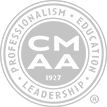Transforming Golf Clubhouse Operations Through Effective Leadership

By Bradley Turner Keiser University College of Golf Executive Director – MBA, PGA
The golf industry is evolving rapidly, shaped by shifting demographics, technology, sustainability initiatives, and rising consumer expectations. Whether managing a private club, a resort destination, or a municipal course, success depends not only on the quality of the facilities but also on the strength of the management team guiding operations. A well-structured and high-performing golf management team ensures that all aspects of the business—from turfgrass maintenance to member relations—work harmoniously toward a shared vision. This article explores the principles and practices behind building a winning golf management team, examining leadership roles, organizational structure, communication strategies, hiring and training, and the importance of culture in achieving long-term success.
The Strategic Importance of a Golf Management Team
Golf facilities are complex enterprises. They combine aspects of hospitality, sport, agriculture, retail, and business management. Unlike single-focus industries, golf requires expertise across multiple domains: agronomy, food and beverage, pro shop merchandising, event management, instruction, and customer experience. A single general manager cannot carry these responsibilities alone; success hinges on a coordinated team of professionals, each contributing specialized knowledge while aligning with the overall mission of the facility.
A winning management team ensures:
- Operational efficiency through division of responsibilities and accountability.
- Consistency of member and guest experience, which is critical for retention and reputation.
- Strategic growth in areas like player development, sustainability, and revenue diversification.
- Adaptability in responding to industry trends such as indoor golf, technology integration, and environmental regulations.
Key Roles in a Golf Management Team
The composition of a golf management team varies depending on the size and scope of the facility, but several roles form the backbone of successful operations.
General Manager (GM)
The GM serves as the chief executive, setting the vision, overseeing budgets, and ensuring strategic alignment across departments. A strong GM balances leadership with delegation, empowering specialists to excel in their domains while maintaining accountability.
Director of Golf / Head Golf Professional
Responsible for golf operations, the head professional manages tee sheets, tournaments, instructional programs, and customer service. They also lead the golf shop staff, supervise teaching professionals, and serve as the face of the game for members and guests.
Golf Course Superintendent
As the steward of the golf course, the superintendent manages agronomy, turfgrass health, equipment, and environmental practices. Given that the golf course is the product, this role is essential to maintaining quality playing conditions and aligning sustainability initiatives with club expectations.
Food and Beverage Director
Hospitality is often the defining feature of the golf experience. The F&B director ensures high-quality dining operations, event catering, and seasonal offerings that enhance member satisfaction and drive profitability.
Director of Membership and Marketing
This role focuses on recruiting and retaining members, developing marketing campaigns, and maintaining strong community relations. They help define the club’s identity and ensure a steady flow of new customers or members.
Finance and Administration
Behind the scenes, financial oversight is critical. Controllers or directors of finance handle budgets, audits, payroll, and compliance, ensuring fiscal health and transparency.
Supporting Roles
Depending on scale, facilities may also include tournament directors, directors of instruction, fitness and wellness staff, event coordinators, and human resources specialists.
Building the Team: Recruitment and Hiring
Recruiting the right talent is the foundation of building a winning team. Golf facilities should look beyond technical skills, prioritizing individuals who demonstrate leadership, adaptability, and a service-first mindset.
Best practices for hiring include:
- Defining clear job descriptions that outline expectations and growth opportunities.
- Assessing cultural fit, ensuring candidates share the facility’s values and customer-focused philosophy.
- Leveraging industry networks, including PGA and GCSAA (Golf Course Superintendents Association of America) career platforms.
- Prioritizing diversity, which strengthens teams through broader perspectives and inclusive service approaches.
- Evaluating leadership potential, since golf facilities benefit from individuals who can grow into larger roles over time.
Internship programs, particularly in turfgrass management and golf operations, are also excellent pipelines for developing future leaders while giving young professionals exposure to real-world challenges.
Leadership and Team Dynamics
A winning management team thrives on leadership that is both visionary and collaborative. The GM must create an environment where all department heads feel empowered to contribute ideas and take ownership of outcomes.
Key leadership strategies include:
- Shared Vision: Every team member should understand the facility’s mission, whether that’s maintaining a championship-level course, providing family-friendly recreation, or being the region’s best event venue.
- Clear Communication: Regular meetings, both formal and informal, keep departments aligned and reduce silos.
- Accountability: Performance metrics should be transparent, with each manager responsible for their budget, staff, and service standards.
- Empathy and Support: Golf management involves long hours and high pressure; leaders must support work-life balance and provide recognition for achievements.
Successful leadership means balancing authority with collaboration, ensuring the superintendent, golf professional, and F&B director feel equally valued contributors to the facility’s success.
Training and Professional Development
Golf is a dynamic industry, requiring continuous professional development. Training ensures staff are not only competent but also motivated to grow with the organization.
Examples of training and development opportunities include:
- PGA and LPGA certification programs for golf professionals.
- GCSAA continuing education in turf science and sustainability.
- Hospitality management courses for F&B staff.
- Leadership development workshops for department heads.
- Cross-training initiatives that allow employees to understand other departments, enhancing teamwork and flexibility.
Investment in training not only improves staff performance but also signals to employees that they are valued, boosting retention and loyalty.
Communication and Collaboration
Even the most talented individuals will struggle without effective communication and collaboration. Winning teams foster transparency and alignment across departments.
Practical approaches include:
- Weekly management meetings to review performance, upcoming events, and operational challenges.
- Digital platforms for scheduling, project management, and information sharing.
- Cross-departmental task forces for major events such as tournaments or weddings.
- Open-door policies that encourage staff at all levels to share ideas or raise concerns.
When communication is prioritized, conflicts are minimized, and creativity flourishes, leading to innovative solutions and enhanced member satisfaction.
The Role of Culture in Team Success
Culture is the glue that binds a management team together. A toxic culture, even with talented individuals, will undermine performance and drive turnover. A positive culture, by contrast, inspires collaboration, loyalty, and pride in the workplace.
Building a strong culture requires:
- Values alignment: Clearly defining organizational values, such as integrity, excellence, service, and sustainability, and embedding them into daily operations.
- Recognition programs: Celebrating achievements, from exceptional customer service to innovative cost-saving measures.
- Transparency: Sharing successes and challenges openly, creating trust across the team.
- Inclusive practices: Ensuring all employees feel valued, regardless of role or background.
Culture ultimately determines how team members treat each other and how they treat members and guests—a direct reflection of leadership.
Measuring Success
For a golf management team to remain high-performing, success must be measured and analyzed. This requires establishing clear Key Performance Indicators (KPIs) across all departments.
Examples of KPIs include:
- Member retention and satisfaction scores.
- Rounds of golf played per year.
- Course quality ratings (measured through surveys or third-party assessments).
- Food and beverage profitability.
- Employee turnover rates.
- Community engagement or environmental sustainability benchmarks.
Regular evaluation allows leadership to identify strengths, address weaknesses, and refine strategies for continued success.
Challenges and Solutions in Team Building
Building and maintaining a winning management team is not without challenges:
- Turnover: High turnover disrupts continuity; solution: invest in employee development and culture.
- Budget constraints: Facilities may struggle to hire top talent; solution: focus on internal promotion and multi-role efficiency.
- Generational differences: Younger staff may have different expectations; solution: create flexible work environments and mentoring programs.
- Conflict between departments: For example, tensions may arise between the superintendent and golf professional; solution: foster collaboration and emphasize shared goals.
Recognizing and addressing these challenges proactively ensures stability and resilience in the management team.
The Formula for a Winning Team
The golf course is much more than fairways and greens—it is an ecosystem of experiences shaped by people. Building a winning golf management team requires vision, recruitment of top talent, investment in professional development, and the cultivation of a strong culture rooted in communication and collaboration. When the general manager, superintendent, head golf professional, and other key leaders work in harmony, they create a facility that delivers exceptional service, maintains fiscal health, and adapts to industry changes. Ultimately, it is this synergy that transforms a golf facility from average to extraordinary, ensuring its success well into the future.














